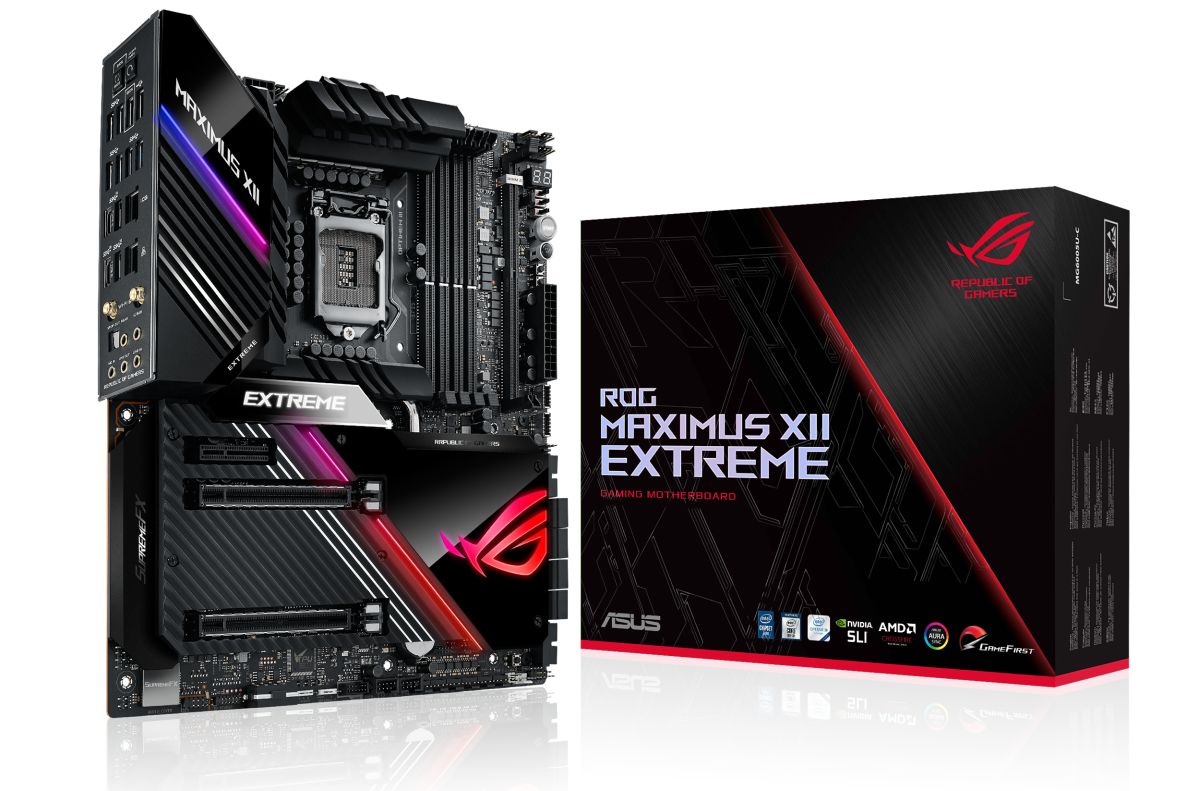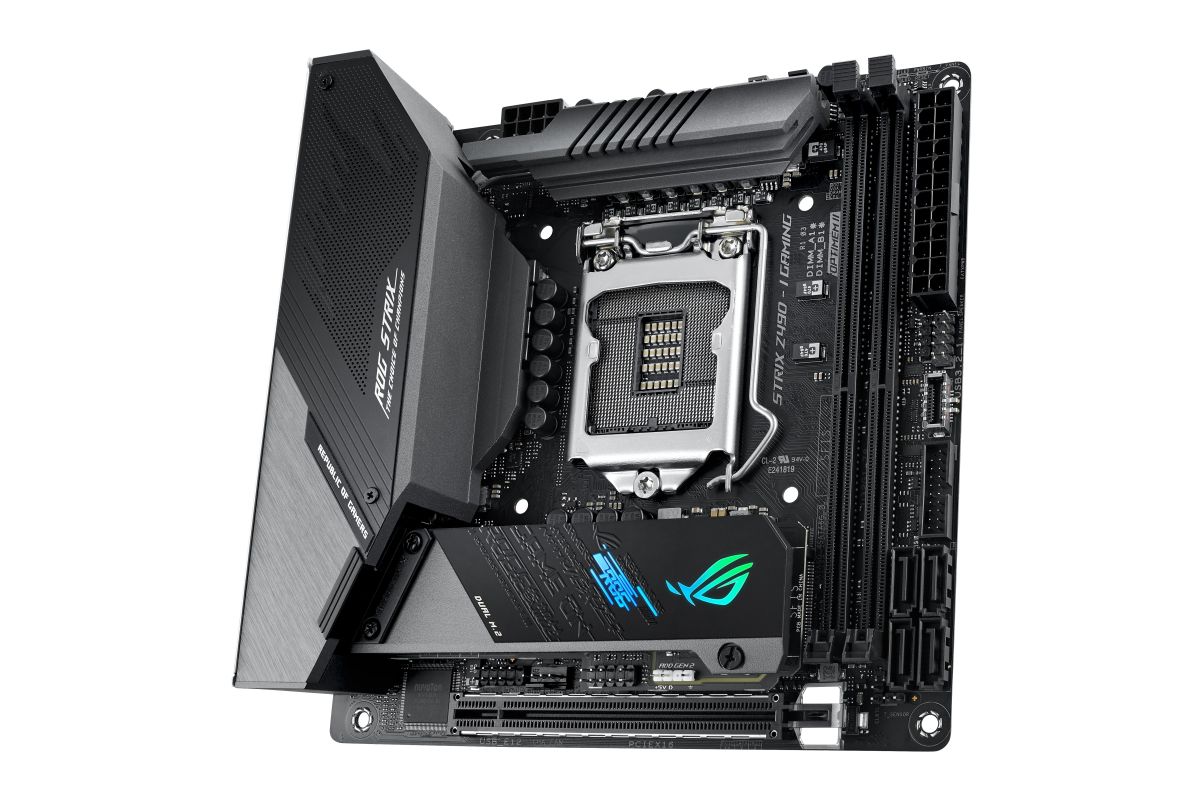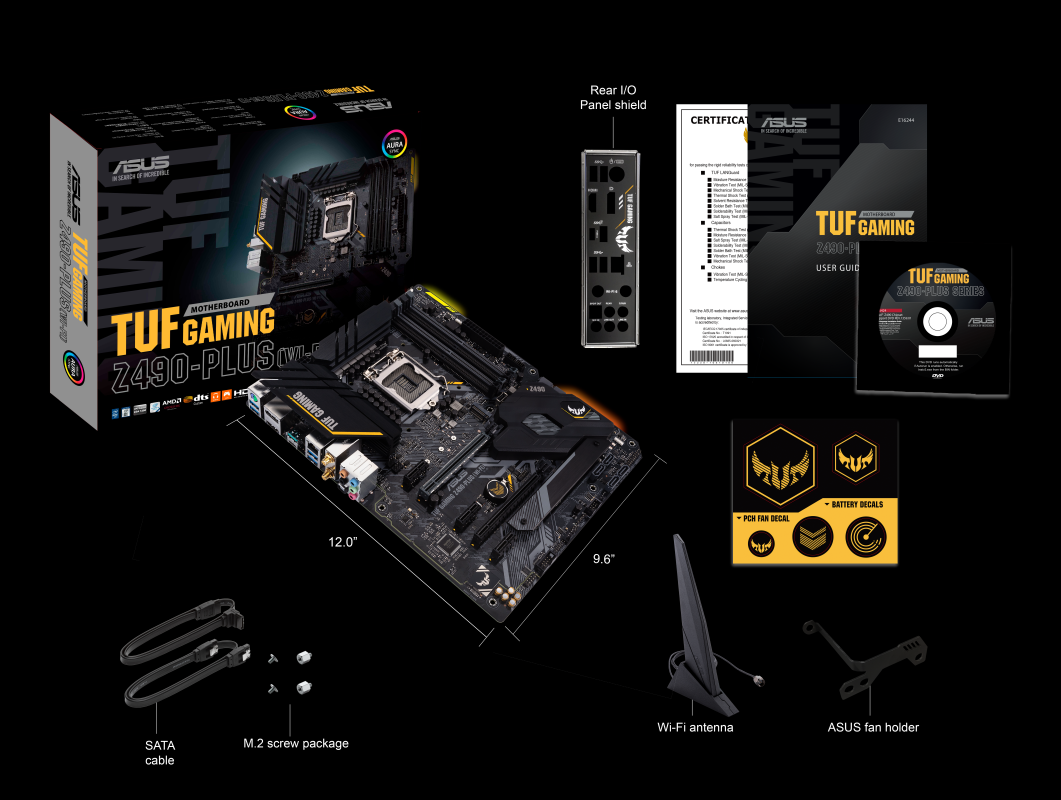Under ASUS’ ROG brand, the lineup consists of no less than three high quality and gaming-grade motherboards. The motherboards in this lineup include the Maximus XII Extreme, the Maximus XII Formula, and the Maximus XII Hero (Wi-Fi). The Maximus XII Extreme is the lineup’s premium motherboard, and comes with several ASUS-centric features. Including its ProCool solid pins and OptiMem III technology for better power stability and signal integrity. The Maximus XII Extreme also comes bundled with a Thunderbolt EX 3-TR card that will provide bi-directional speeds up to 40Gbps through a single cable.
Dual 2.5Gb and 10Gb Ethernet ports are now a staple, but only for the Extreme the Formula. In the case of the Maximus XII Hero (Wi-Fi), the second ethernet port is only capable of speeds up to 5Gbps. As its name implies, this motherboard is made for consumers who wish to stay connected wirelessly while still maintaining its power. Moving down the lineup, the ROG Strix lineup features a total of four motherboards: the ROG Strix Z490-E, Z490-I Gaming, Z490-A Gaming, and Z490-G Gaming (Wi-Fi). For the record, this is the only series in ASUS’ new lineup that provides a mini-ITX Z490 option to the masses. While still retaining several premium features, including an 8+2 power stage VRM with active cooling. All motherboards under the ROG and ROG Strix series also come with support for NVMe M.2 slots in some form or another, support for USB-C 3.2, as well as support for DDR4 RAM at frequencies of up to 4800MHz. Next on the list is the TUF Gaming Z490-Plus (Wi-Fi) and currently the only motherboard in the series to support Intel’s Comet Lake-S. Featuring a six-layer PCB, 12+2 teamed power stage design, support for Wi-Fi 6, two PCIe x16 slots and NVMe M.2 SSD slots, this PCB is as durable as it is filled with all the bells and whistles of a high-end motherboard.
Last but not least, there’s the ASUS Prime Z490M-Plus. Like its predecessor in the Prime lineup, the motherboard is designed with durability and affordability in mind. It features a single Intel Gigabit Ethernet port only, and also comes with a standard fare of USB 3.2 ports – both Type-C and Type-A – as well as dual M.2 slots for NVMe SSDs.


